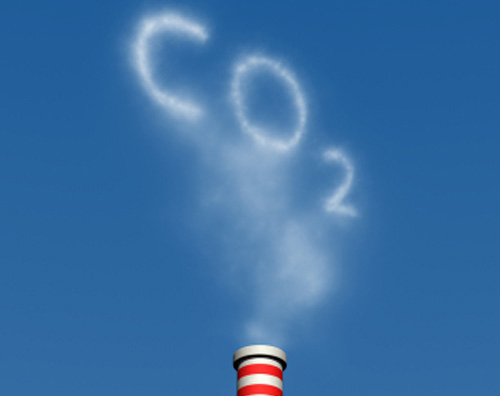
(Ecns.cn) -- China's carbon dioxide (CO2) emissions have been surging up to match the country's rapid urbanization, however, this has now put many sectors under pressure, notes the China Economic Weekly.
On May 23, 2012, at an aviation conference in Beijing, industry leaders voiced strong opposition to the European Union (EU) plan to tax international airlines for carbon emissions, as the EU has directed Chinese carriers to submit emissions details of their aircraft by the middle of June.
Much earlier, the World Bank projected that China's manufacturing sector, especially the textile industry, would suffer a serious decline in exports once the carbon tax was levied globally.
Although China is not the only country confronted by such problems, domestic enterprises must take immediate action to save against a rainy day, said Gao Yimin, managing director of British Standards Institution (BSI) China.
Attitudes towards EU carbon tax
In March, Airbus parent company EADS said that China had blocked firms from buying planes made by the manufacturer, another volley in the row over the EU carbon levy plan. The charge was not confirmed by the Chinese side.
But it is true that China has been taking a strong stance on this issue, despite the EU's warning of possible punitive measures in response. And not only China but countries such as the US and India have all expressed their displeasure about the tax.
Last week, Chinese and US aviation authorities and industry associations reiterated their opposition to the EU Emissions Trading Scheme (ETS) at the 2012 China Civil Aviation Development Forum, urging the EU to take a global and comprehensive approach to the issue, according to Xinhua News Agency.
China Air Transport Association said it will never join in the ETS, as it will only increase the costs of the country's aviation industry, adding a burden of 800 million yuan (US$126 million) in 2012 alone, and an extra 17.6 billion yuan (US$2.8 billion) between then and 2020, noted the Workers' Daily.
No countries outside the EU support the ETS, said Chai Haibo, deputy secretary-general of the association, who also revealed that Chinese airlines will not abide by the system without being ordered to by the government.
Emission reduction still needed
Though Chinese airlines stand firm against the EU's emission-management scheme, it is still an urgent task for China to focus on emission cuts, as the country's CO2 levels are already very high , said the China Economic Weekly.
According to Gao Yimin, a report released by the Netherlands Environmental Assessment Agency (NEAA) found that in 2007 China's emissions were 14 percent higher than those of the US, and by 2010 that difference was 73 percent higher.
As a big country, China should not follow the UK's road of developing first and then managing the environment, because the consequences will be terrible and almost impossible to reverse, warned Gao.
In terms of per capita emissions, China hovered at 6.8 tons in 2010, but the US was 16.9 tons, revealed Gao. China's big population weakened the concentration a bit compared to the US, but it was still a little higher than the world average per capita emissions, as India's was only 1.5 tons that year, Gao added.
Gao quoted an NEAA researcher's comment that China's emissions are most likely to continue growing substantially for years to come because they are tied to the country's strong economic growth and its particular mix of industry and power sources.
Gao sees little respite in carbon trading as a solution. The World Bank estimated that trade could be worth $US3.5 trillion globally by 2020, meaning it would overtake oil to become the world's largest market, according to a program called China Dialogue.
If this is true, concluded Gao, many enterprises will have to face unexpectedly high costs for carbon emissions, which will probably lead them to bankruptcy.
Emission cuts have become an important evaluation indicator for government officials in China, especially after the National Reform and Development Commission demanded big cities and provinces run carbon trading trials last year.
Starting small
China set emission cuts targets in the 12th five-year planning period, specifically to reduce energy consumption per unit of GDP by 16 percent, and growth in its carbon dioxide output per unit of GDP by 17 percent.
To answer the call, the establishment of carbon trading systems across the country will be critical. Currently, there are three main carbon markets in China, namely the Beijing Environment Exchange, Shanghai Environment Energy Exchange and Tianjin Climate Exchange.
But technology and equipment updates are a long way off for most enterprises, because funding is substantial. So Chinese enterprises should start small and save energy in a comprehensive fashion, said Gao.
A typical example is to tell every staff member to turn off the lights on time and turn down the heaters when not strictly needed; Gao encouraged the many little gestures that go with an energy saving attitude and promised that collectively they would make dramatic changes.
Of course, the government should continue to strengthen its efforts to achieve the targets for energy-intensification and carbon intensity cuts. An important part of the mission is also to explore technologies that are more environment-friendly.

Copyright ©1999-2011 Chinanews.com. All rights reserved.
Reproduction in whole or in part without permission is prohibited.